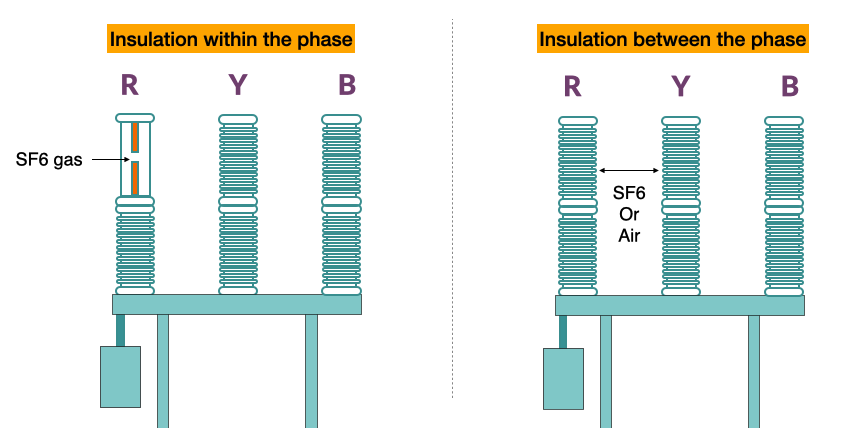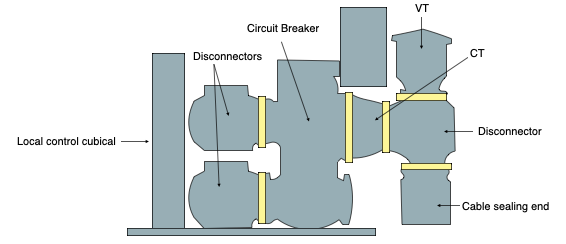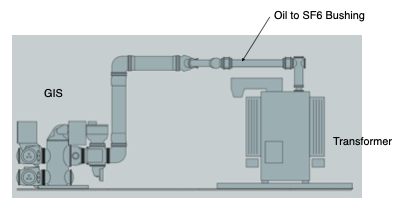What is a Gas Insulated Switchgear (GIS)?
What is a Gas Insulated Switchgear (GIS)? https://www.theelectricalguy.in/wp-content/uploads/2023/02/Inductive-Reactance-1024x576.jpg 1024 576 Gaurav J Gaurav J https://secure.gravatar.com/avatar/87a2d2e0182faacb2e003da0504ad293?s=96&d=mm&r=gFirst of all let’s make one thing very clear. GIS or gas insulated switchgear is not a type of substation. It is actually a switchgear technology that is used in a substation. GIS is a type of switchgear and not a type of substation. Type of substation are different. But generally if GIS is used in a substation then many people refer it as GIS substation. Now lets understand the basics of Gas Insulated switchgear or GIS.
Why do we need Substation & Switchgear?
Power stations where the power is generated are generally built far away from its ultimate enduser. And this because of many valid reasons. For example, power stations causes pollutions, and they must be located near its primary fuel source like coal or water, etc. In this way the power generation company or utility can save the cost of fuel transportation and also time. Hence, most of the time power stations are built far away from its ultimate end users.

Now, to make this power available to the end customer, we need to transmit it over a long distance and after that we need to distribute it. Generation happens at a lower voltage level, transmission happens at a high and extra high voltage level and distribution happens at lower voltage level. And substations helps us through out these phases in lowering and increasing the voltage levels. Not only this but, substation also serves many other purposes, if you are interested in knowing other purposes then I have dedicated video on that. Click here to watch that video.

Gas Insulated Switchgear (GIS)
Now, to lower or to increase the voltage level, or to disconnect or connect the supply, we need different types of switchgear in the substation. And GIS or gas insulated switchgear is one of the switchgear technology that is used in a substation. This technology differs from the available technologies like AIS or Air insulated switchgear or Hybrid switchgear or Mixed technology. As the name suggest, in GIS technology, all the components are insulated by SF6 gas. Insulation within the phase is provided by SF6 gas. Insulation between the phases is also provided by SF6 gas. Two things we need to understand here
1) insulation within the phase and
2) insulation between the phases.
Let’s understand that.

Consider example of circuit breaker shown above. It has three phase R, Y & B as shown. Now, the insulation provided in the R phase or any other phase is known as insulation within the phase. The phase will have SF6 gas insulation. Insulation between R & Y phase or R & B phase or any two phases is called as Insulation between the phases. And in GIS technology, within the phase and between the phase insulation is provided by the SF6 gas. On the other hand, in AIS technology, only insulation within the phase is provided by SF6 gas. Insulation between the phase is Air and hence the name, Air insulated switchgear.
In GIS technology, all the switchgear like disconnector & earthing switch, circuit breaker, current transformer, voltage transformer. are insulated by SF6 gas. Not only this, even the bus bars are also insulated by the SF6 gas. All these switchgear are placed in a metal encapsulated compartments.

Further, GIS is subdivided into different modules or zones. For example circuit breaker will have its own dedicated module. Similarly, voltage transformer will have its own separate module. Current transformer will have its own separate module. Busbar will have its own separate module. Each module will have SF6 gas filled in it. And the SF6 gas pressure inside the module can be monitored for each module separately using the dedicated density monitor provided with each module. These different modules are tightly connected together to form a complete Gas insulated switchgear.
Bushings
Since, all these swicthgears are connected together and insulated with SF6 gas, direct connection of transformer or overhead line is not possible. To allow the connection of transformer and incoming supply we need to use Bushings. It can be oil to SF6 bushing, which facilitates the connection between transformer and GIS. It can be an Air to SF6 bushing which allows the connection between overhead line and GIS.

Since dielectric properties of SF6 gas are far far better than the air, the GIS technology is very very smaller in size compared to the AIS technology. This technology is safer compared to the AIS technology since everything is insulated by SF6 gas. And hence, you will find GIS is installed even at the basement of buildings. So just to give you one example for comparison, one bay of 145kV GIS can be fitted into one 10×10 room. On the other hand, for one bay of 145kV AIS, we would need around 10 to 12 such rooms.
Is GIS a new Technology?
Now, is the GIS technology a new technology? No. It’s not. It been available from more than last 30 years. The GIS technology with SF6 gas is available from 72.5kV up to 800kV. This type of technology is preferred where the space limitations are there. For example, if you need to build a substation in a very populated city, GIS would be the best option in such situation. But of course, this technology is very much costly as compared to AIS technology. And hence, in many cases, where land is not an issue, AIS is still the best choice.
Manufacturers of GIS
In India, there are many manufacturers of GIS technology like :
- Siemens
- Hitachi Energy
- General Electric
- Crompton Greaves Power & Industrial Solutions
- Toshiba
- Schinder Electric
- Hyosung, etc
Applications of GIS
- Power Transmission & Distribution
- Integration of Renewable power generation
- Offshore and onshore wind power connections
- Industrial application
- Long range power transmission
- Power plants
If you are interested in knowing basics about the substation, then you can check out my basic course on substation, click here to know more about the course.
- Post Tags:
- GIS
- substation
- Switchgear
- Posted In:
- Switchgear
- Tutorials
Gaurav J
Electrical Engineer. Content Creator. Currently working with a High & Extra High Voltage Switchgear Industry.
All stories by: Gaurav J
